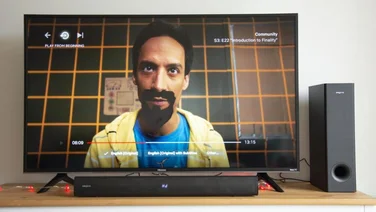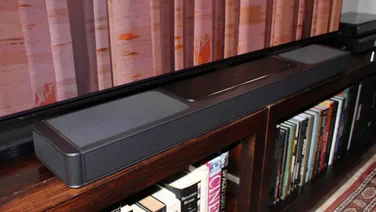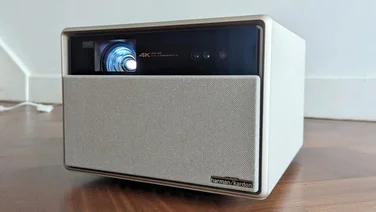To help us provide you with free impartial advice, we may earn a commission if you buy through links on our site. Learn more



The PicoPix is a cute projector which looks like a miniature version of a standard projector, much like BenQ’s Joybee GP1 (see What’s New, Shopper 262). It uses an LED lamp and LCoS (Liquid Crystal on Silicon) technology to project a 52in diagonal image at 7ft. It can run on batteries for two and a half hours, and can play MP4 videos directly from USB drives, making it ideal for movies on the go.

LCoS is much like DLP (Digital Light Processing) technology, but where DLP uses an array of movable micro-mirrors to reflect a light source either through the lens or onto a heat sink, depending on what the picture requires, LCoS uses liquid crystals on top of a reflective surface. These block and allow light to reach the reflective surface below – if light is allowed to hit the mirror, it’s reflected out of the lens. In DLP projectors, the light then passes through red, green and blue filters in a spinning colour wheel, to show an image of one colour after another, and it relies on the fast speed of the wheel to trick your eyes into seeing a single full-colour image.
At least, that’s the theory: in practice, your eyes do sometimes pick up on the individual red, green and blue images, and this produces what’s known as the “rainbow effect”. In the PicoPix’s LCoS system, the light source is made up of separate red, green and blue LEDs that flash quickly – but not quickly enough to remove the rainbow effect. It’s quite apparent, especially in black-and white images or videos in which there is quick movement.

Another problem is that it’s incredibly hard to set up the PicoPix so that the image is perfectly rectangular. There’s no keystone correction, so you have to have the projector absolutely level and square-on to your screen. With only 30 lumens brightness, you’ll also want to turn the lights off for best results. In the right conditions we found colours to be vivid, and there’s a strong red cast. Image controls are limited to Brightness, Contrast and Saturation, so you can’t correct this.
The built-in MP4 player can play a wide variety of container files and codecs from a USB flash drive, including MKV and Flash video, and MPEG4, H.263 and H.264. Audio support is limited to MP3 and WAV, and you can view images in JPEG, BMP, PNG, GIF and TIFF formats. For presentations, you’ll still need to attach it to a computer as it can’t read PowerPoint files natively, but if your presentation is in a video format, you’ll only need to carry the PicoPix and a memory stick.

The PicoPix comes with an adaptor for composite video and stereo RCA audio, but if you want to connect it to a laptop you’ll need to buy the £20 VGA adaptor, which also plugs into your laptop’s 3.5mm audio jack output to play audio over the projector’s tiny speakers. There’s also a 3.5mm audio output socket for speakers or headphones. You can buy a component video adaptor for £20, while an iPhone/iPod/iPad adaptor is £30.
The PicoPix 1430 may be more expensive than Samsung’s SP-H03 (What’s New, Shopper, April 2011), but it supports external USB hard drives and includes a remote control. However, its image suffers heavily from the rainbow effect and you need to buy expensive adaptors for VGA and iPhone support. Unless you really need the portability, we’d recommend sticking with a standard office projector.






